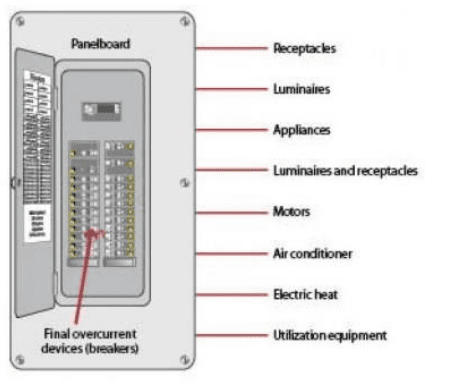In Business Since 2000

Why are Load Studies Necessary?
When providing electrical contractors with load studies for a new installation, end customers often fail to understand why they are necessary. After all, the branch circuit panel has spare breakers.

Load Studies | Understanding NEC Requirements
Most customers aren’t aware that the National Electrical Code (NEC) requires a load study. Load studies protect both people and properties from overloads—specifically, section 220.87 (Determining Existing Loads).
The NEC Code 220.87 specifies that load calculations for existing equipment shall use actual measured loads to determine a panel’s total permissible load. This section requires the electrical load data of a panel for one year. Consequently, this effectively delays any retrofit construction.
However, an exception exists, permitting electrical contractors to make a precise load survey of the
panelboard.
For example:
What if the maximum demand data for one year isn’t available?
Maximum demand refers to a measure of average power demand over 15 minutes.
In that case, the calculated load shall be permitted based on the maximum demand continuously recorded over a minimum 30-day period.
These 30 days are measured using a recording ammeter or power meter connected to the highest loaded phase of the feeder or service (based on the initial loading at the start of the recording).
Meanwhile, taking recordings from an occupied building or space ensures it will reflect the feeder or
service’s maximum demand.
220.87 Determining Existing Loads
The calculation of a feeder or service load for existing installations shall be permitted to use actual maximum demand to determine the existing load under all of the following conditions:
(1) The maximum demand data is available for a 1-year period.
Exception: If the maximum demand data for a 1-year period is not available, the calculated load shall be permitted to be based on the maximum demand (measure of average power demand over a 15-minute period) continuously recorded over a minimum 30-day period using a recording ammeter or power meter connected to the highest loaded phase of the feeder or service, based on the initial loading at the start of the recording. The recording shall reflect the maximum demand of the feeder or service by being taken when the building or space is occupied and shall include by measurement or calculation the larger of the heating or cooling equipment load and other loads that may be periodic in nature due to seasonal or similar conditions.
(2) The maximum demand at 125 percent plus the new load does not exceed the ampacity of the feeder or rating of the service.
(3) The feeder has overcurrent protection in accordance with 240.4, and the service has overload protection in accordance with 230.90.

